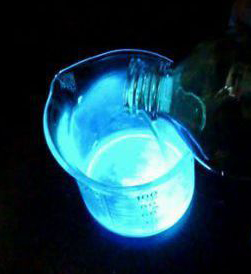| Message: | Luminol can detect and analyze the concentration of metal ions
Under normal circumstances, the chemiluminescence reaction of luminol with hydrogen peroxide is quite slow, but the reaction is very rapid when certain catalysts are present. The most commonly used catalyst is metal ions. In a large concentration range, the concentration of metal ions is proportional to the luminescence intensity, so that chemiluminescence analysis of certain metal ions can be performed. This reaction can be used to analyze organic compounds containing metal ions to achieve Very high sensitivity.
Luminol can be labeled with carboxylic acid and ammonia compounds for detection
It is to label the derivatives of luminol such as isoluminol (ABEI) to carboxylic acid and ammonia compounds, and then after separation by high performance liquid chromatography (HPLC) or liquid chromatography (LC), and then under alkaline conditions It reacts with hydrogen peroxide-potassium ferricyanide for chemiluminescence detection. Other separation methods can also be used, such as labeling the newly synthesized chemiluminescence reagent isoluminol isothiocyanate to yeast RNA, separating it by centrifugation and dialysis, and then performing chemiluminescence detection. In addition, N 2 (B2 carboxyl propionyl) isoluminol was used, and its performance was studied. |
 my account
my account
 log out
log out
 my account
my account
 log out
log out
